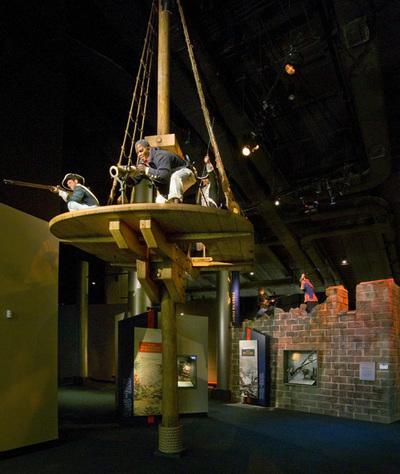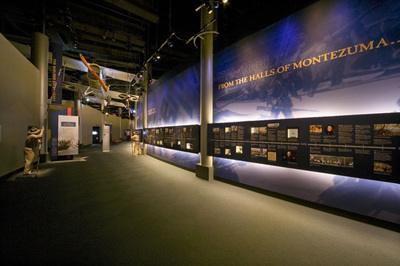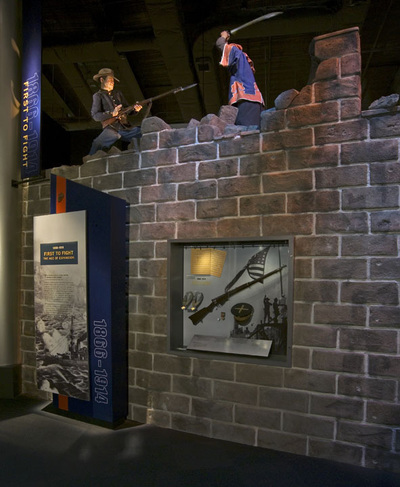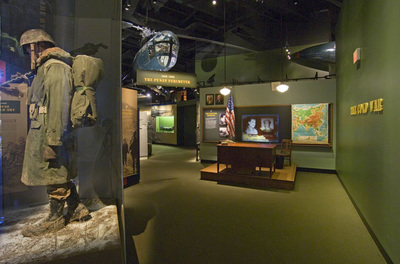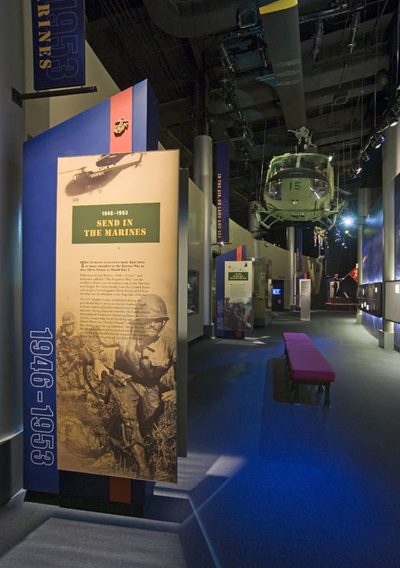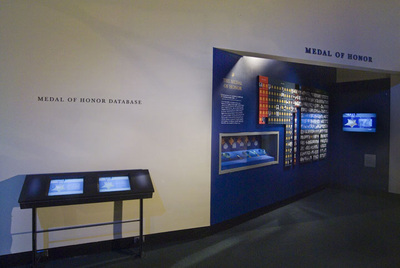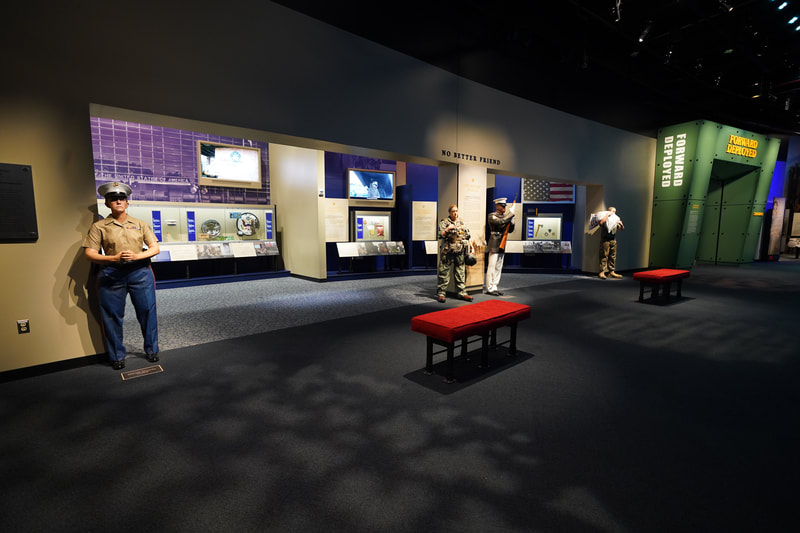Legacy Walk
|
Legacy Walk immerses visitors in the nearly 250 years of Marine Corps history. A timeline of history details the Marine Corps’ activities at home and abroad alongside national and world events. Legacy Walk connects the Museum’s historical exhibit galleries. For visitors with a limited amount of time to spend at the Museum, Legacy Walk provides a quick initiation into the rich and storied history of the Marine Corps. Colonial Marines perched high atop a sailing ship’s fighting top ready to sweep the decks of an opposing ship with withering musket fire greet visitors entering Legacy Walk. Only yards away, two-time Medal of Honor recipient Dan Daly fights on the Tartar Wall in Peking in 1900. Farther on, a World War I Marine locked in hand-to-hand combat with a German soldier reminds visitors that war can be intensely personal. Continuing along Legacy Walk, a Navy corpsman works frantically to save a wounded Marine during World War II. Looking up, visitors see a de Havilland DH-4 as its Marine pilot prepares to pick up a message pouch during the Banana Wars of the 1920s. Also proudly displayed overhead is the UH-1E Huey helicopter in which Maj Stephen Pless earned the Medal of Honor in 1968. Legacy Walk also highlights the cooperative relationship between the Marine Corps and the United States Navy, and introduces the Marine air-ground team concept that became the foundation for the Marine air-ground task force (MAGTF). Special exhibits along Legacy Walk explore the meaning of the Marine Corps moto Semper Fidelis, the history behind the Marines’ Hymn, and other facets of Marine Corps culture. Visitors can explore some of the Marine Corps’ many non-combat roles in both the No Better Friend exhibit and the Terror Strikes exhibit, the Marine Corps’ role during on September 11, 2001, and its aftermath. More personal and reflective visitor experiences are found in the Semper Families and Never Forget exhibits: Semper Families examines the evolution of the Marine Corps family; while the Never Forget area is the most reverent exhibit, honoring the ultimate sacrifice made by some Marines and their families. As visitors move along Legacy Walk, photographs, maps, iconic artifacts, and life-like cast figures capture the courage of individual Marines and the evolution of the Marine Corps as a whole. Future plans expand Legacy Walk with new galleries that cover the Marine Corps’ history from 1975 to 2015. See the Museum’s Final Phase page for more information on future galleries. |
Take a walking tour of the new extension of Legacy Walk!
|
Over 200 Years of History
We are always happy to hear from you Get in touch
THE MUSEUM IS OPEN! PLAN YOUR VISIT HERE.
National Museum of the Marine Corps
1775 Semper Fidelis Way Triangle, VA 22172 Toll Free: 1.877.653.1775 |
VISIT
RESEARCH |
LINKS
|
JOIN US ONLINE!
|
©
Copyright 2021. Admission to the National Museum of the Marine Corps is FREE. Hours are 9:00 AM to 5:00 PM every day except Christmas Day.

